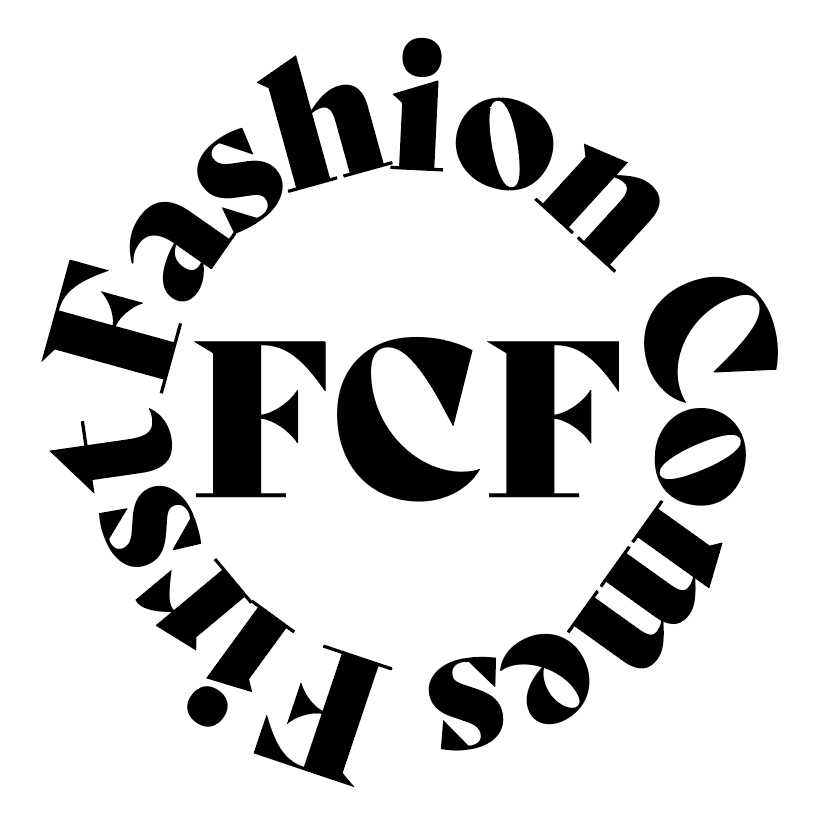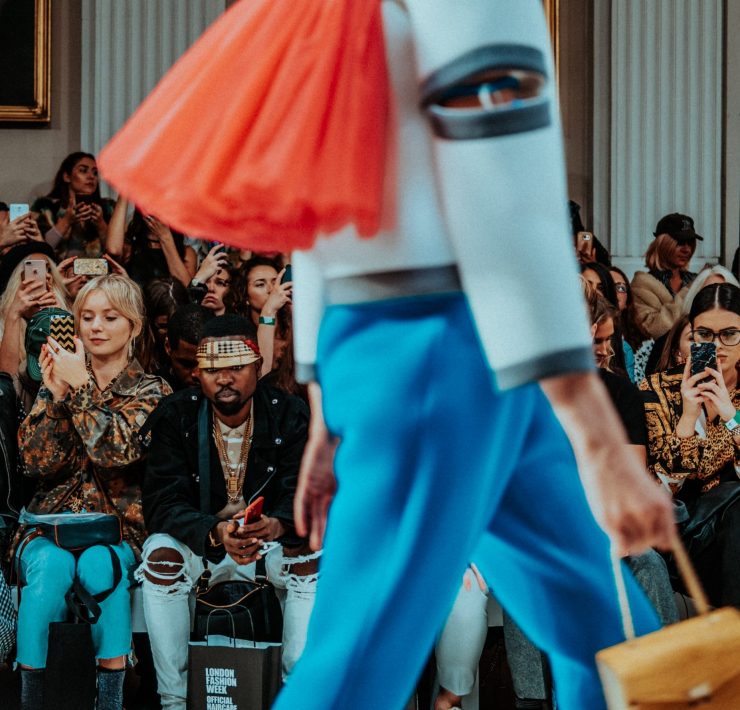Devyani graduated from Yale University in 2018 as a double…
Never have we ever…or have we?
Looking at the past, we can see how the ruins of tragedy spark creativity in the most unexpected ways. In an interview, renowned British designer Jonathan Anderson and Tim Blanks recalled the inspiring story of the twentieth-century ceramist Lucie Rie. During the Second World War, Rie famously turned her studio into a “button factory” to manufacture handmade buttons, which at the time were deemed social necessities for women’s clothing. Despite the simplistic nature of buttons, Rie’s intricate yet charming designs made them into something more: prized possessions.
Rie imbued her prior training and knowledge of ceramics into every button she made, giving each one character and a unique personality. This attention to detail is a talent that industrial machines could never replicate. Rie’s creative approach to fashion during the trying circumstances of war, is a perfect example of how artisanal objects of beauty created during times of tragedy would continue to inspire the British fashion empire for years to come.
Similarly, in our seemingly bleak post-Covid reality, fashion is constantly adjusting and evolving to adapt to our ever changing landscape. With fatalities on the rise and countries struggling to thrive under COVID-19, our dire socio-economic difficulties parallel to Lucie Rie’s Britain.
More parallels of these instances of creativity rising from tragedy exist throughout history. For instance, during the Second World War from 1941-1949, Britain orchestrated a system of clothing rationing, which meant that people could use their money and coupons to purchase only a fixed number of clothing items.
.
But why was there a need to ration clothing?
The answer lies in a simple analysis of demand and supply. Civilians, on the demand side, were cash-strapped due to the economic hardships of wartime. On the supply side, the manufacturing sector had directed the majority of its production capacity toward the urgent needs of war. These factors alone were enough to make austerity an inescapable theme of life.
Today is no different. Manufacturing facilities worldwide are directing their services to the exclusive production of goods that will effectively equip Covid-19’s frontline workers. Particularly in fashion, big and small designers across the globe have repurposed their entire operations to produce masks, overalls, medical gowns, hand sanitizers, and other personal protective equipment (PPE) for doctors, nurses and essential workers. Additionally, consumers worldwide are projected to significantly reduce discretionary spending in the face of widespread unemployment, salary cuts, bankruptcy and other forms of financial hardship, a trend that is very familiar to our history books.
Overall, if “austerity” is the “new normal,” what could that possibly look like in the 21st century?
According to the past, taxing times have often birthed lasting innovation in the creative and business landscape of the fashion industry. As Covid-19’s war-like uncertainties affect the industry on a daily basis and possibly into the foreseeable future, looking back at wartime Britain might help us predict or even prepare for upcoming trends in the millennial version of “postwar fashion.”
For instance, Britain’s clothing coupons plan. The concept was simple. Every fashion item was assigned a points value according to the amount of material and labor used in its production. For example, 11 points for a woman’s dress, 2 for a pair of stockings, 8 for a men’s shirt, and 7 for a pair of men’s shoes. The initial maximum allowance for every adult was 66 points per year, an amount that would substantially decline as the war progressed. Special relaxations of the restrictions were made for some including “manual workers, civilian uniform wearers, diplomats and theatrical performers.” The majority, however, were tied down by these strict rationing rules, which forced people to make prudent choices and spend judiciously when buying clothes.
While we might not have clothing coupons in 2020, there is a trend to lessen overconsumption. Tighter pockets may finally end the materialistic culture of over buying and selling fashion items. “Retail therapy” will no longer be a sustainable hobby by most. With limited spending capacity, customers across the board will have to practice some sort of self-imposed clothing rationing. People will cease to buy as much as they used to and will have to prioritize necessity and durability over fast fashion.
This trend toward sustainability is also seen in children’s clothing. In wartime Britain, children’s clothing were given lower values as well as additional coupons. The logic behind these concessions was that “they would need new clothes more often as they grew.” Parents could hand in clothes when children had outgrown them and, in return, received a corresponding number of points as credit for later use. Parents were also encouraged to buy clothing in bigger sizes for their children in order to save money on future purchases as children grew up, a trend that has remained prominent to this day.
Moreover, in wartime Britain women were using furnishing fabrics and blackout material to make dresses and parachute silk to make underwear, nightclothes and wedding dresses. They were recycling old clothes to make homemade accessories. Repair, renovate and create seemed to be the mantra of fashion in their times of austerity. There was also the “Make Do and Mend Campaign,” which taught and encouraged people to make their existing clothes last longer. Through public awareness initiatives, such as posters and leaflets, information on clothes care was made widely available: how can one prevent moth damage to woolens? Care for different fabrics? Make shoes last longer? The campaign also provided the public with vocational training in essential design skills such as pattern cutting.
Currently, with children dressed in surgical masks and gloves at a young age, their first encounters with fashion are already reasonably compromised. It will definitely be interesting to see how consumer austerity pushes designers to reinvent products and create children’s fashion for the new social and economic realities of our times.
These advances further exemplify the classic idea that constraints feed creativity. The Make Do and Mend posters, pamphlets, and programs seem eerily reminiscent of posts and tutorials that consume our social media feeds today, offering advice on everything from at-home shoe care to laundry tips to upcycled mask-making. Additionally, like some cash-strapped women of wartime Britain, customers today also want clothes that serve them longer. Perhaps 2020 will see the resurgence of timeless colors and versatile silhouettes that look fashionable for longer than a season as resale platforms that trade, rent and sell vintage clothing are recently seeing greater success.
This use of individual ingenuity to revolutionize fashion during trying times were not reserved for clothes and shoes, but the realm of beauty through its own DIY revolution. Makeup, then subject to a luxury tax, was not rationed but remained very expensive. Brands such as Coty, famous for their face powder and perfumes, shortened their supply by repurposing some of their production capacity to make foot powder and anti-gas ointment for the army. Once again, in the face of such shortages, society was ready to adapt.
The inherent human spirit of creative problem-solving during a crisis is commendable and remains time-tested till today. Like Coty, many modern beauty brands have diverted their operations to the production of hand sanitizers and products directly addressing the needs of the crisis. Due to social distancing guidelines, customers also lack access to beauty professionals. Beauty products and services might retain their value in public and private life, but customers’ needs, affordability and access points have changed drastically. Using their inner creativity, people have been investing time in DIY facials, at-home haircuts and other, eventually cheaper, methods of keeping up appearances. With the vast amount of information available on the internet, it’s no surprise that we are able to easily adapt to the times.
Although the underlying circumstances British civilians experienced during WWII were drastically different from our pandemic-stricken society today, the underlying theme of creativity resulting from tragedy parallels are evident. As a history major in college, the topic of historical recurrence has always fascinated me. As the history books have shown, as long as hope remains, society will always find a way to adapt– even in the harshest of times.
What's Your Reaction?
Devyani graduated from Yale University in 2018 as a double major in History and French. On her blog, Art & Style, she writes on the fashion, art, and food scene in and around Paris. She also works as a freelance writer and digital creative.













